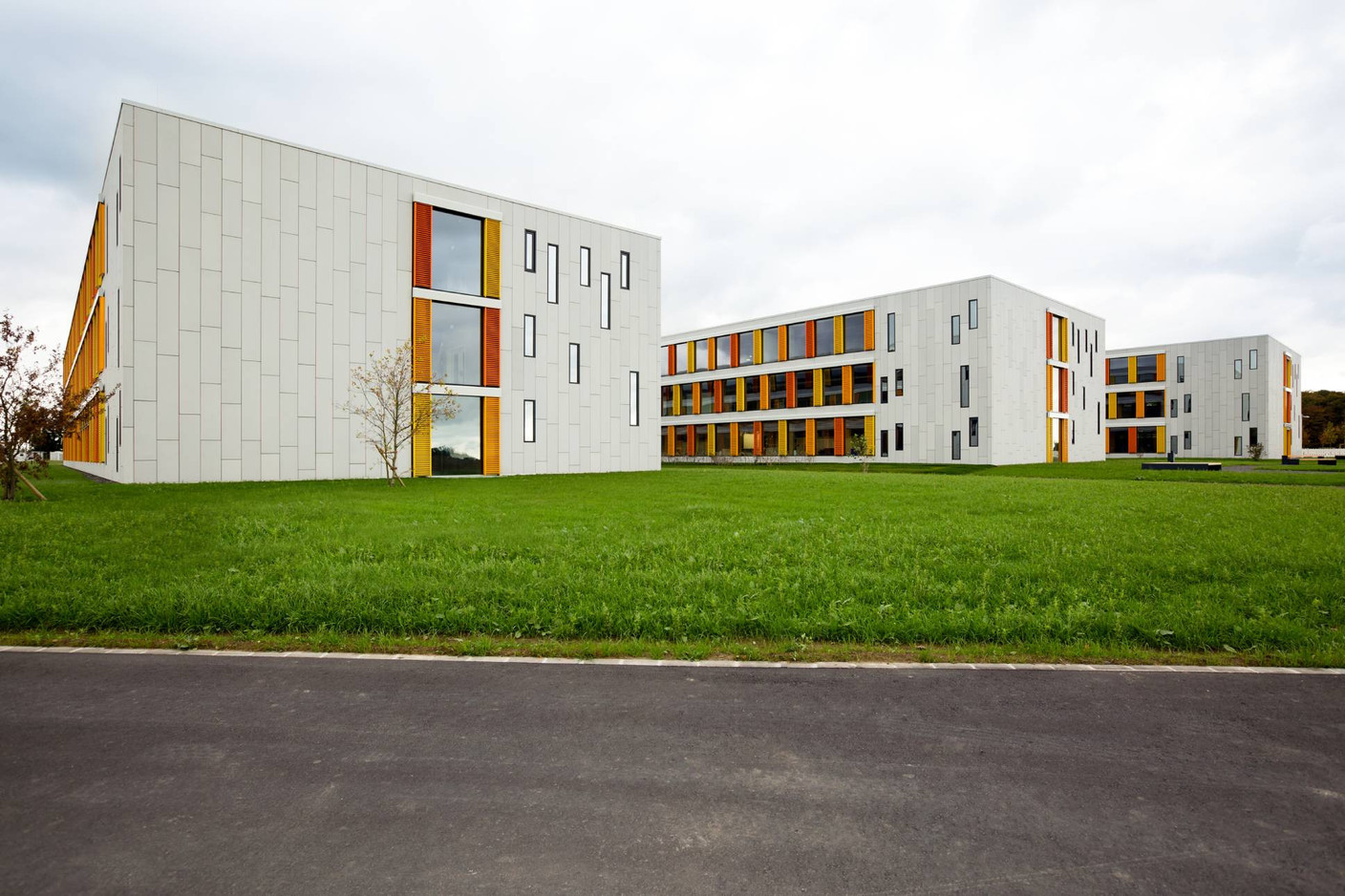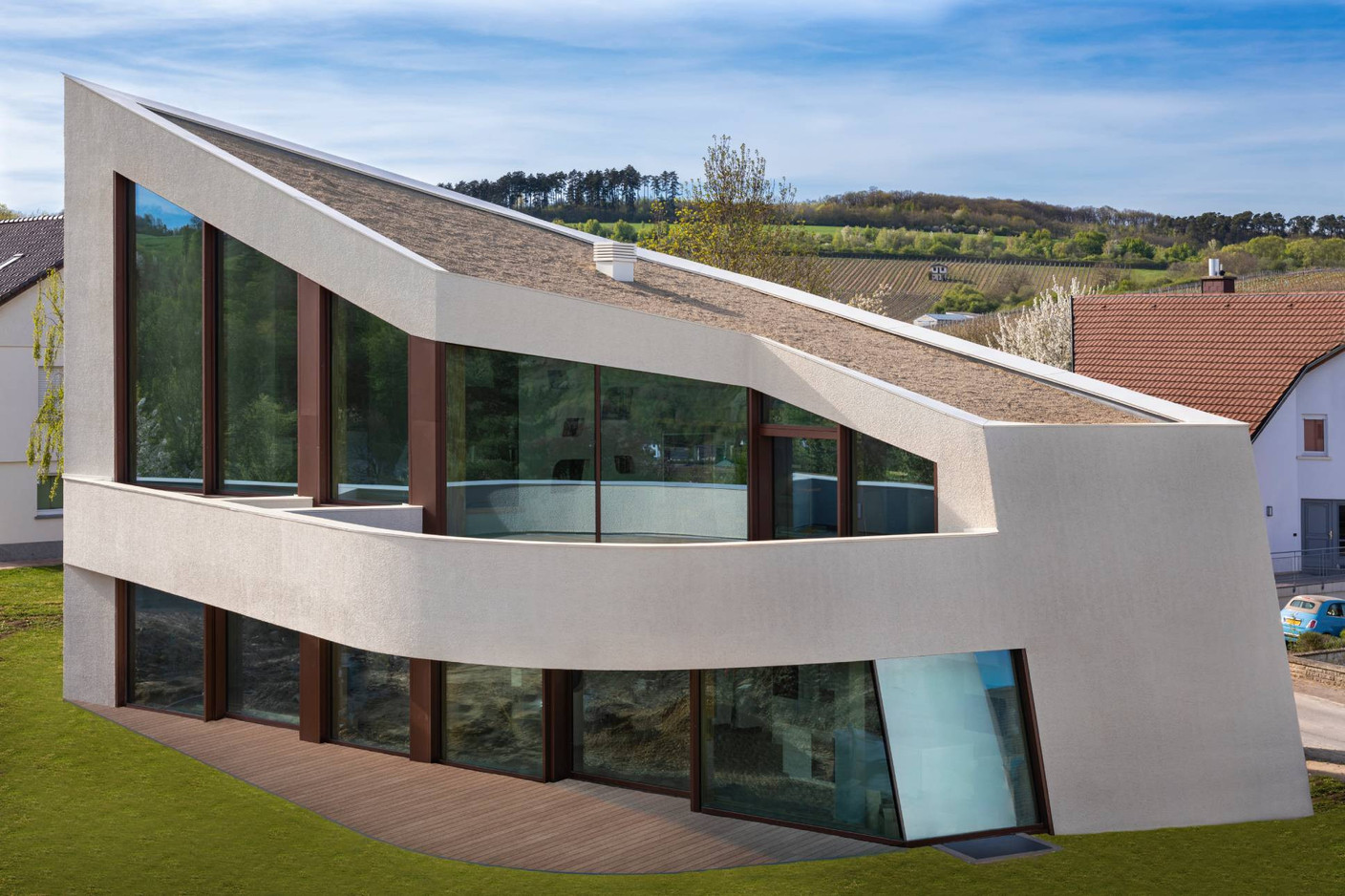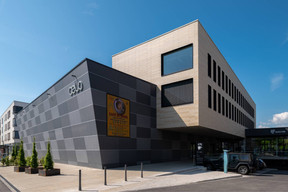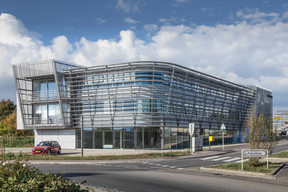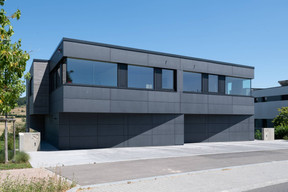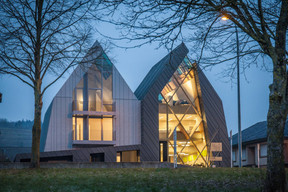Meet Forma, the merger of G+P Muller and Web.
The two halves of the new firm are well established in the grand duchy. G+P Muller was founded in 1966 by Paul Muller, and since 2020 has been headed by his son Guittou Muller. The junior Muller joined in 2002 after studying architecture in Innsbruck, ascending to the top job when his father retired. “My path was pretty clear,” he says of his career. Since 2020, he has been the firm’s sole partner, heading up a team of 12 based in Luxembourg.
Web is newer, founded in 2004 by Jean-Claude Welter and Maurice Bley, who had already been working together for several years. Laury Mersch joined the team in 2006 and became a partner in 2012. Together, they have built up a team of 18 people, with offices in Grevenmacher (in a building they designed themselves in 2015).
“I’ve known Jean-Claude [Welter] since I was a student,” says Guittou Muller. “We went to the same university, share the same vision of architecture and have been friends ever since.” When Muller was invited in 2017 by the Paperjam+Delano Business Club to present one of his favourite projects by another architect, he chose one by Web.
Complementary offices
“So far, we’ve mainly worked on small and medium-scale projects,” says Welter. “Single-family homes, petrol stations, offices, fire stations, etc. Our main customers are private individuals and local authorities. We don’t do many public buildings.”
“For our office, it’s a bit different,” adds Muller. “We’ve done larger-scale projects: schools, secondary schools, residences for developers, cultural centres, medical centres, etc. For very large projects, we also work in association with other offices, in Luxembourg or abroad. We’ve actually already had the opportunity to work with Web--it’s partly via this collaboration that we’ve seen how complementary our two offices and approaches are.”
He goes on to explain why the time is ripe to merge: “We’re reaching an age where we need to think about the long-term future of our professional tools… our business has changed a lot in recent years: more and more specific skills are in demand, which requires larger teams. That’s why we felt that merging our two offices was the best solution.”
“We also have a number of complementary professions,” explains Mersch. “For example, there’s an interior architect on the G+P Muller team, which we don’t have on ours--while Web can contribute other urban planning skills that G+P Muller staff don’t currently have.”
A gradual merger
This merger did not happen overnight. For over a year now, the teams have been working more and more collaboratively on a daily basis. They have also held joint workshops and team-building events to get to know each other better. Still, they have opted to keep both of their locations. “We decided to keep the team on two sites: one in Luxembourg, the other in Grevenmacher,” says Muller. “This corresponds better to the distances between work and home for our employees. Plus, it means that we can cover different geographical areas of the country.”
Current Forma projects include an international school in Junglinster, a medical centre in Niederanven, a mixed office and housing project in Schengen, a youth centre in Schifflange and various single-family homes. “We also want to continue the competition dynamic,” says Welter. “It’s something that both our offices do and that we want to continue, certainly with a small dedicated team.”
Despite these administrative changes, the partners promise that one thing will remain constant: their attention to architecture and their respect for clients and projects.
This article in Paperjam. It has been translated and edited for Delano.



